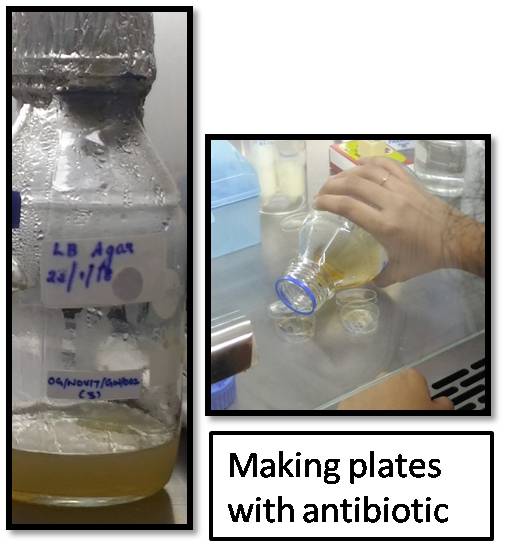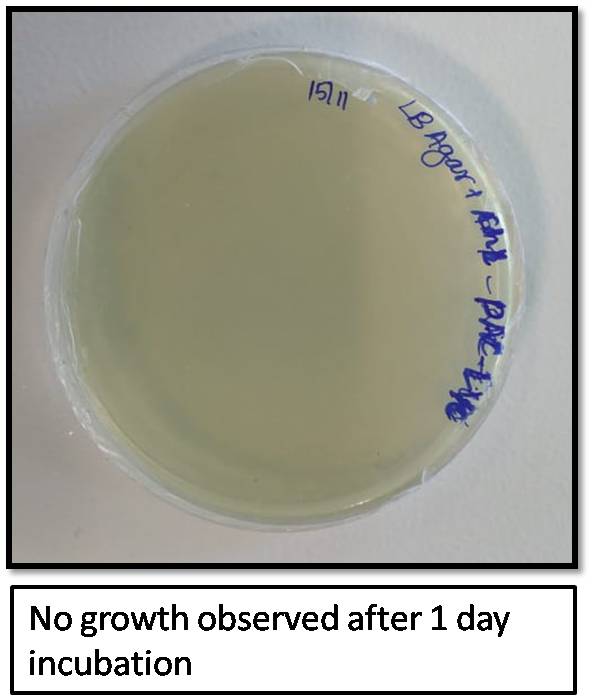Bio Production
Design Assignment
Part II: Design strategies for increasing lycopene production
Using tools such as Biocyc (https://www.biocyc.org) and KEGG (http://www.kegg.jp), select enzymes that can be added to
(or knocked out of) your lycopene-producing E. coli to increase the amount of lycopene they produce. The pAtipiTrc plasmid available in Addgene represents one possible strategy, as it overexpresses a heterologous idi enzyme. Labs working with PCR and cloning may want to try replacing the idi gene in pAtipiTrc with alternative enzymes to see how they impact colony color.
The enzyme that could increase lycopene production in E-coli is DXP (1-deoxy D-xylulose 5' phosphate) synthase[1]. KEGG website was used to get information about the DXP Synthase enzyme.
The 1-deoxy D-xylulose 5' phosphate synthase in the DXP pathway will react with DXP to give isopentenyl diphosphate, which in turn produces Lycopene in the presence of crtI. The lycopene production in E-coli increases with overexpression of DXP synthase [1]
Part III: Design strategies for converting lycopene to beta-carotene
Use Biocyc and/or KEGG to identify the enzyme that can convert the red pigment lycopene to the orange pigment beta-carotene. Plasmids that can be co-transformed with pAC-LYC that produce this enzyme can be found in Addgene. Labs working on miniprep and transformation can order these plasmids to observe switch the color of their E. coli from red to orange.
The Beta carotene pathway was got from Biocyc Website for the conversion of lycopene to beta carotene. I understood from the pathway that, all-trans lycopene in the presence of lycopene beta cyclase enzyme, gets converted to gamma carotene, which in the presence of gamma carotene beta cyclase gets converted to beta carotene which is the orange pigment.
An important branch-point in the biosynthesis of carotenoids lies in the cyclization of the linear, pink all-trans-lycopene into carotenes with all-β-, all-ε- or mixed β and ε rings ( α-carotene). The cyclization reactions are catalyzed by lycopene β- or ε-cyclases. These cyclases all share a conserved amino acid sequence signature and bind dinucleotides such as FAD and NADP, otherwise share little resemblance[2].
The following image shows the schematic representation of conversion of Lycopene to Beta carotene.

Practical Assignment
Part I: Test pAC-LYC plasmid
The pAC-LYC plasmid is available from Addgene, and contains three genes from Erwinia herbicola: CrtE, CrtI, and CrtB. This plasmid is provided by Addgene on an agar stab transformed into Top10 E. coli. That means that it can simply be streaked onto LB Agar with chloramphenicol to make lycopene-producing colonies that should be pink to red in color.
We first prepared LB Agar (2g in 50ml distilled water) and autoclaved it.
After the agar is cooled down to about 50 degrees, we added Chloramphenicol of concentration 30mg/litre as described in the pamphlet and made the agar plates.

We then streaked the agar plates with the pAC-LYC plasmid and kept in the incubator at 37 degrees overnight.

We did not find any growth of the plasmid on the plate as seen from the above image.
We tried keeping the plate for an additional 48 hours at the incubator at room temperature.

We saw light red colonies growing on the agar plate after 60 hours of incubation at room temperature.
Thus we found that the production of lycopene in agar plates from the pAC-LYC plasmid causes the light red colour and also it takes a long time to grow when compared to other E.coli based plasmids.
New ethics or safety considerations this week:
Do your activities this week raise new ethics and/or safety considerations you had not considered in week 1? Describe what activities have raised these considerations and any changes you have implemented in response.
- The design experiments did not raise any new ethics as it was based on the research work and KEGG, Biocyc Websites.
- As E-coli is a less toxic common bacteria, the BSL1 was sufficient enough to carry out the practical experiment.
REFERENCES
[1] KANG, M.J., YOON, S.H., LEE, Y.M., LEE, S.H., KIM, J.E., JUNG, K.H., SHIN, Y.C. and KIM, S.W., 2005. Enhancement of lycopene production in Escherichia coli by optimization of the lycopene synthetic pathway. Journal of microbiology and biotechnology, 15(4), pp.880-886.
[2]Cunningham, F.X., Pogson, B., Sun, Z., McDonald, K.A., DellaPenna, D. and Gantt, E., 1996. Functional analysis of the beta and epsilon lycopene cyclase enzymes of Arabidopsis reveals a mechanism for control of cyclic carotenoid formation. The Plant Cell, 8(9), pp.1613-1626.
Go back to home page


